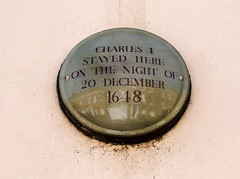

King Charles I of England
(1600-1649)
Prince of Wales (1616-1625), King of Scots (1625-1649), and King of England (1625-1649)
Died aged 48
Wikidata WikipediaCharles I (19 November 1600 – 30 January 1649) was King of England, Scotland, and Ireland from 27 March 1625 until his execution in 1649. He was born into the House of Stuart as the second son of King James VI of Scotland, but after his father inherited the English throne in 1603, he moved to England, where he spent much of the rest of his life. He became heir apparent to the kingdoms of England, Scotland, and Ireland in 1612 upon the death of his elder brother, Henry Frederick, Prince of Wales. An unsuccessful and unpopular attempt to marry him to the Spanish Habsburg princess Maria Anna culminated in an eight-month visit to Spain in 1623 that demonstrated the futility of the marriage negotiation. Two years later, he married the Bourbon princess Henrietta Maria of France. After his 1625 succession, Charles quarrelled with the English Parliament, which sought to curb his royal prerogative. He believed in the divine right of kings, and was determined to govern according to his own conscience. Many of his subjects opposed his policies, in particular the levying of taxes without parliamentary consent, and perceived his actions as those of a tyrannical absolute monarch. His religious policies, coupled with his marriage to a Roman Catholic, generated antipathy and mistrust from Reformed religious groups such as the English Puritans and Scottish Covenanters, who thought his views too Catholic. He supported high church Anglican ecclesiastics and failed to aid continental Protestant forces successfully during the Thirty Years' War. His attempts to force the Church of Scotland to adopt high Anglican practices led to the Bishops' Wars, strengthened the position of the English and Scottish parliaments, and helped precipitate his own downfall. From 1642, Charles fought the armies of the English and Scottish parliaments in the English Civil War. After his defeat in 1645 at the hands of the Parliamentarian New Model Army, he fled north from his base at Oxford. Charles surrendered to a Scottish force and after lengthy negotiations between the English and Scottish parliaments he was handed over to the Long Parliament in London. Charles refused to accept his captors' demands for a constitutional monarchy, and temporarily escaped captivity in November 1647. Re-imprisoned on the Isle of Wight, he forged an alliance with Scotland, but by the end of 1648, the New Model Army had consolidated its control over England. Charles was tried, convicted, and executed for high treason in January 1649. The monarchy was abolished and the Commonwealth of England was established as a republic. The monarchy was restored to Charles's son Charles II in 1660.
DbPedia
Family tree
uncle of Rupert
Commemorated on 28 plaques
On a mount - about 80 yards - to the rear of this tablet Charles I raised his standard August 25th 1642.
St James Terrace, Nottingham, United Kingdom where they raised his standard
Charles I raised his Standard near here before the Civil War 1642
King Charles Street, Nottingham, United Kingdom where they raised his standard
Near this site Charles I raised his Royal Standard on August 22nd 1642 an act which marked the beginning of the English Civil War
Castle grounds, Nottingham, United Kingdom where they raised his standard
His Majesty King Charles I passed through this hall and out of a window nearly over this tablet to the scaffold in Whitehall where he was beheaded on 30th January 1649
Horse Guards Avenue, London, United Kingdom where they passed through
Star and Garter stood here rebuilt 1836 coaching inn formerly an Elizabethan house where King Charles I stayed 17 October 1642
Pizza Hut, Victoria Street, Wolverhampton, United Kingdom where they stayed
Site of the principal entrance of the ancient walled and fortified town c.1521- c.1780. Beverley Gate. Here Sir John Hotham, the Governor, denied entry in 1642 to King Charles I - the first overt act of the Civil War.
Ruins of Beverley Gate, Hull, United Kingdom where they was denied entry
The Swan Hotel King John is reputed to have stayed at a hostelry in 1216 and King Charles I in 1646 (after his defeat at Naseby)
The Swan Hotel, 29 High Street, Downham Market, United Kingdom where they reputedly stayed
The Crown Inn Near here formerly stood this most famous of Rochester inns. Built before 1316 its landlord was Simon Potyn. Ann of Cleeves, Queen Mary Tudor, King Philip of Spain, Queen Elizabeth, and King Charles I. stayed here
Gundulph Sq, Rochester, United Kingdom where they stayed
The Coat of Arms of Charles I. The Coat of Arms above the entrance is that of Charles I who stayed in the King's Manor in 1633 and 1639. His father James I (James VI of Scotland) whose monogram appears on the doorway had introduced the unicorn the supporter of Scotland into the royal arms. The lion is the supporter of England. The two beast hold lances with the flags of St Andrew and St George. The fleur-de-lis of France and the harp of Ireland can also be seen. Note the N of the word MOИ. The coat of arms was restored by the York Civic Trust in 1972.
King's Manor, Exhibition Square, York, United Kingdom where they stayed (1633-1639)
The King's Manor. A house was built on this site c.1270 as a Residence for the Abbot of St. Mary's Abbey but was substantially rebuilt in the late 15th century. After the Dissolution of the Monasteries in 1539 it became, until 1641, the Headquarters of the Council of the North and the Residence of its Presidents who added to the buildings. Henry VIII, Charles I and James I stayed there. Since 1963 it has been occupied by the University of York.
Exhibition Square, York, United Kingdom where they stayed
King Charles I 1625 - 1649 This bronze statue was made in 1633 for Lord Treasurer Weston by Hubert Le Sueur. It was aquired for the Crown and set up here in 1675. The carved work of the pedestal being executed by Joshua Marshall
King Charles I statue, Charing Cross near Trafalgar Square, London, United Kingdom where they is commemorated
Charles I and the Civil War On the 5th May 1646 at 7.00 a.m. Charles I arrived at 'The King's Head' from Stamford, disguised as a clergyman. Here he spent his last hours of freedom before being taken to Kelham to the Scottish Army Commander. He was later handed over to the English Parliamentary Army.
Saracen's Head, Market Place, Southwell, United Kingdom where they was (1646-16446)
Site of The Greyhound Inn Where in July 1647 King Charles I met his children James, Duke of York, Henry, Duke of Gloucester and Princess Elizabeth. This was arranged by the Parliamentary leader, Sir Thomas Fairfax. The local people decked the King's route with green boughs and strewed it with flowers.
66 High Street, Maidenhead, Berkshire, SL6 1PY, Maidenhead, United Kingdom where they was
Erected in 1584, Porch House is Northallerton's oldest house, Charles I stayed here as a guest in 1640 and as a prisoner in 1647.
68-70 High Street, Northallerton, United Kingdom where they stayed (1640)
On this site formerly stood Anderson Place in which King Charles I was prisoner from 13th May 1646 to 3rd February 1647 during the Scottish occupation of the city.
Market Street West, Newcastle upon Tyne, United Kingdom where they was imprisoned
Governor's Tree. Site of the Governor's Tree, where important visitors to Tynemouth were met as they disembarked in Pow Burn. These visitors included King Charles I in 1633 and King Henry VIII's commissioners, when they came to dispossess the monks of Tynemouth Priory in 1539.
Tynemouth Road, Tynemouth, United Kingdom where they was
Gamul House. Behind this brick façade is a Jacobean Hall, once the home of the Gamull family. Sir Francis Gamull Mayor of Chester 1635-36 and a Royalist supporter in the Civil Ware, entertained King Charles I here from 23-25 September 1645 during the Battle of Rowton Moor.
Brewery Tap - Gamul House, Lower Bridge Street, Chester, United Kingdom where they was entertained (1645)
This house built A.D. 1934 replaces an ancient posting inn bearing the same sign which stood 100 yds away to the S.W. King Charles 1st. is reputed to have rested there when visiting his troops at Kingstanding during the Civil Wars
The Boar's Head, 340 Aldridge Road, Great Barr, Birmingham, United Kingdom where they rested (1642)
King Charles stood on this tower , Sept 24 1645, and saw his army defeated on Rowton Moor.
Morgan's Mount, City Wall, Chester, United Kingdom where they stood (1645)
The King's Head Hotel Circa mid-17th century, reputedly visited by Charles I in 1645, became a posting inn in the late 17th century. In the late 18th and early 19th centuries stagecoaches left here for London. It now includes the former Monmouth Bank (c 1740) and the County Club (c 1877).
English translation: Gwesty'r Kings Head Adeiladwyd y dafarn tua chanol y 17 ganrif, a daeth yn dafarn bost wedyn. Dywedir i Siarl 1 ymweld a'r adeilad yn 1645. Gadawai'r goets fawr oddi yma i Lundain yn niwedd y 18 ganrif a dechrau'r 19 ganrif. Bu'r adeilad yn gartref i Fanc Trefynwy (1740) a'r County Club (c 1877) hefyd.
The King's Head Hotel - Agincourt Square, Monmouth, United Kingdom where they visited (1645)
Tower House built in 1630 Charles I thought to have slept here on 3rd September 1645
Tower House, Tower Hill, Bromyard, United Kingdom where they slept (1645)
William Stukeley, the noted 18th century antiquary lived in the house opposite, No 9, 1743-48. The structure above was part of the house forming a bridge that spanned the road. It formed Stukeley's study and library. Stukeley claimed that King Charles I spent the last night of freedom in this house, May 1646.
Barn Hill, Stamford, United Kingdom where they stayed near
This house in which Robert Gilchrist the Newcastle poet died in 1844, and in which King Charles I rested when he played golf in the Shieldfield, was devised to the Lord Mayor, Aldermen and Citizens of the City and County of Newcastle Upon Tyne by the late Alderman Sir Walter Richard Plummer, D.C.L. 1917. Unveiled by Councillor Mrs. T. Russell 2nd May 1978. This plaque was originally affixed to King Charles House, 23 Shieldfield Green which stood nearby.
Shieldfield Green, Newcastle upon Tyne, United Kingdom where they rested
Charles I stayed here on the night of 20 December 1648
28 West Street, Farnham, United Kingdom where they was
Siege Damage Looking ahead, you can see repairs to the stonework of the medieval City Wall. The unweathered masonry marks the site of a breach, battered through the wall by Parliamentary cannon, when Chester was besieged during the Civil War. By September 1645 Chester's loyal stand for King Charles I was nearing an end. The suburbs had been taken. The Royalist garrison and all the citizens took refuge inside the City Walls. Parliamentary troops mounted cannon at St John's Church, just east of here and bombared these south eastern defences. On Monday 22nd September the Walls here were attacked from 12 noon until 4pm. Thirty-two shots were fired, making a breach wide enough for "ten men abreast to enter". Two Royalist soliders were killed trying to fill the hole with beds and woolpacks. Roman Gardens That night, the Parliamentarians attemped to storm the breach, but were beaten back after fierce fighting. Hearing of the city's plight King Charles I arrived in Chester with a force of cavalry on 23rd September. The next day, his army was decisively defeated at the battle of Rowton Moor, one of the turning points of the Civil War. The Siege of Chester continued. Although the Walls were breached in other places, the Parliamentarians failed to enter the city until Chester surrendered in February 1646. Siege Damage
Roman Gardens, Chester, United Kingdom where they arrived (1645)
On Sunday 27th June 1647. King Charles of blessed memory, having been deprived of the ministrations of his Church for a year and two months, while a prisoner of the Army of the Scots, worshipped in this Church. His chaplains present were Dr Hammond & Dr Sheldon
St. Ethelreda's Church, Hatfield, United Kingdom where they worshipped (1647)
THE TALBOT First mentioned in 1580 as a beerhouse. In 1616 as a drinking haunt and in 1760 as a hotel. During the Civil War Charles I ordered that Tetbury be spared from destruction indicating that the King could possibly have dined within the building. In the 18c the frontage was rebuilt and in the 19c the hotel became a coaching inn. In 1881 the historic meeting of the Tetbury Gas Company was held here. Under the building is a deep well and a large stone cistern which probably supplied the water for beer making.
Gumstool Hill, Tetbury, United Kingdom where they visited
King Charles I The King, Charles Stuart, was tried for high treason on this spot by the High Court of Justice established by the Commons of England for that purpose, Saturday 20th Monday 22nd, Tuesday 23rd and Saturday 27th January 1649. The King was convicted of treason and sentenced to death on Saturday 27th January and executed in front of the Banqueting House, Whitehall Palace, at two o'clock in the afternoon of Tuesday 30th January 1649.
Westminster Hall, Parliament, London, United Kingdom where they was
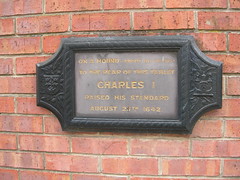



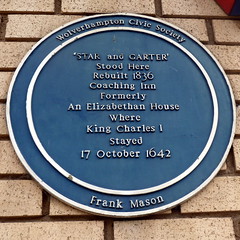

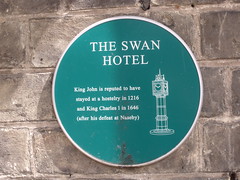
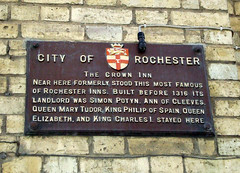
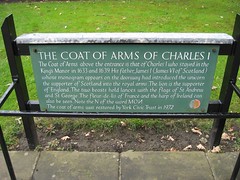
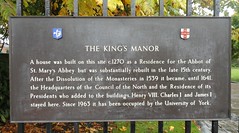
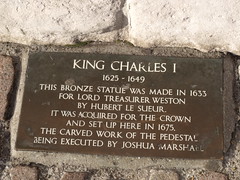
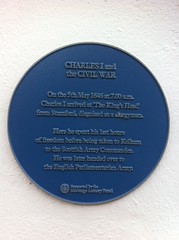
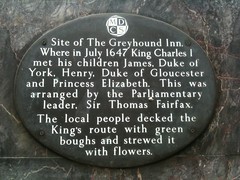
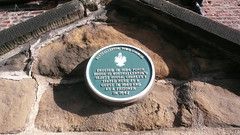
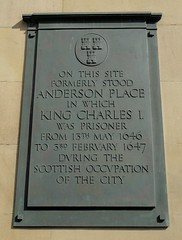
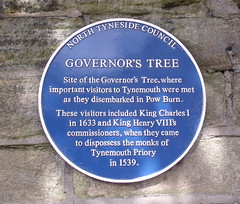
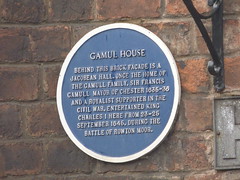
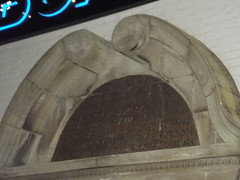
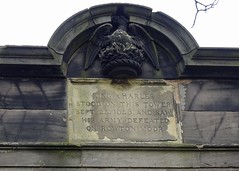

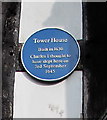
.jpg?width=250)

